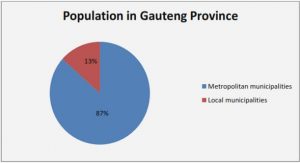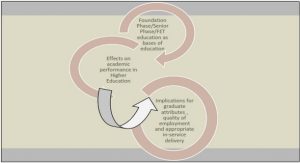Get Complete Project Material File(s) Now! »
The moral implications of different tempos
With his notion of the Will to Power Nietzsche depicts the universe as ‘a monster of force’ (WLN 38[12]) and a thing of ‘chaos’. He indicates that ‘the total character of the world … is in all eternity chaos in the sense not of a lack of necessity but of a lack of order, arrangement, form, beauty, wisdom, and whatever other names there are for our aesthetic anthropomorphisms’ (GS 109). What does Nietzsche mean by describing our natural world as a thing of chaos? R. Schacht (1983:196) explains that according to Nietzsche the world ‘neither constitutes nor manifests any of the sorts of order we are accustomed to think it has or are disposed to desire it to have.’ Nietzsche emphasizes this aspect of the dance of the universe by employing the term ‘monster of force’, indicating that no fixed set of moral valuations can be attained. Therefore moral values cannot be regarded as the highest value. Nietzsche insists that ‘we cannot reject the possibility that [the world] may include infinite interpretations’ (GS 374). He rejects a fixed moral interpretation and judgement of the natural world and human life. He claims ‘that there are altogether no moral facts,’ arguing that ‘morality is merely an interpretation of certain phenomena more precisely, a misinterpretation’ (TI The ‘Improvers’ of Mankind 1). This idea is crystallized in his notion of the ‘Dionysian world’, which is ‘beyond good and evil’ and described in terms of an ‘eternally changing’ ocean, requiring infinite interpretations. He indicates that the Dionysian artist ‘is precisely the one who says Yes to everything questionable, even to the terrible he is Dionysian’ (TI ‘Reason’ in Philosophy 6). Nietzsche’s sea metaphor implies that any moral values and judgements are inappropriate in the world of the Will to Power, which is eternally changing.
The rhythms of Chinese written language
The importance of intimate observation of Nature is not only emphasized by scientists in the West, but also in Chinese thought and is evident in their language, especially in their writing system. The Chinese have not shaped their language in the same manner as have Westerners with their dominant linear frame of reference. Nietzsche makes mention of ‘the common philosophy of grammar …, the unconscious domination and guidance by similar grammatical functions that everything is prepared at the outset for a similar development and sequence of The rhythms of Chinese written language The importance of intimate observation of Nature is not only emphasized by scientists in the West, but also in Chinese thought and is evident in their language, especially in their writing system. The Chinese have not shaped their language in the same manner as have Westerners with their dominant linear frame of reference. Nietzsche makes mention of ‘the common philosophy of grammar …, the unconscious domination and guidance by similar grammatical functions that everything is prepared at the outset for a similar development and sequence of philosophical systems; just as the way seems barred against certain other possibilities of world-interpretation’ (BGE 20). Some Westerners might consider a language like the Chinese language strange and bizarre. The Chinese ideograms ‘are supposed to be outlandish, weird, devious, and as tricky as “the mysterious East”’, notes Watts (1975:8). Such an attitude might perhaps appear an obstacle to understand the beauty and simplicity of the Chinese language. The Western sensibility emphasises rational knowledge which is ‘a system of abstract concepts and symbols, characterized by the linear, sequential structure which is typical of our thinking and speaking. In most languages this linear structure is made explicit by the use of alphabets which serve to communicate experience and thought in long lines of letters’ (Capra 1975:27). However, the Chinese language does not make use of alphabets, but instead each Chinese character makes use of line drawings full of complex images. By using alphabets to form words and sentences, the alphabetic languages express themselves in a strictly linear fashion, while the Chinese ideographic writing system, which is a series of patterns, appears to be ‘not so laboriously linear as an alphabetic language’ (Watts 1975:7). The natural world is not a linear system, because it contains infinite varieties and complexities, a multidimensional world where things happen all together. Nature is a simultaneity of patterns at any given moment. Like these patterns, the pictographs of the Chinese writing system seem to be an expression of reality without assigning any human value to it in terms of a logical scheme. The beauty of the Chinese language is apparent in its characters, which can be described as patterns or pictures. The Chinese characters seemingly accord more easily with the processes of nature than words, as expressed by the Chinese proverb: a picture is worth one thousand words.
Chapter 1: The dance of the universe
1.1. The rhythm of life and nature
1.2. The Tao
1.3. The dancing rhythm of the I Ching and of Nietzsche’s Will to Power
Chapter 2: The rhythms of the dance
2.1. The truth game
2.2. The rhythms of Chinese written language
2.3. The wonder of numbers
2.4. The same rhythms of microcosm and macrocosm
Chapter 3: Dancing spirits: The Nietzschean Übermensch and the Chinese sages
3.1. The Chinese sages
3.2. The Nietzschean Übermensch
3.3. Model vs. vision
3.4. Self-overcoming and self-cultivating
3.5. Zarathustra’s three metamorphoses and Chinese self-transformation
Chapter 4: The dance of the Bodhisattva
4.1. Chinese sage, Nietzschean Übermensch and Bodhisattva
4.2. Nietzsche’s doctrine of Eternal Recurrence and the practice of Samantabhadra Bodhisattva
Conclusion






